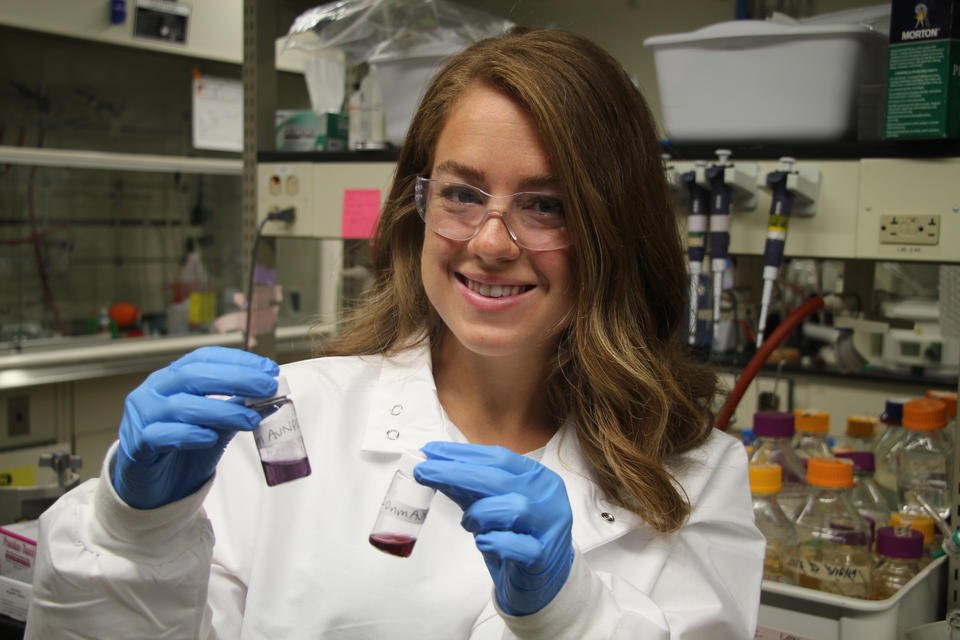Stephanie Mitchell

Stephanie Mitchell was born and raised in the suburbs of Chicago, Ill, and is a fifth-year graduate student working with Professor Erin Carlson.
Her interest in chemistry took a while to develop but evolved out of a love and deep appreciation for art and nature.
“What caught my attention a lot were the vibrant colors, but what kept me engaged was that as I got closer and closer to a lot of things, the details became astounding,” said Stephanie. “The iridescence of a fish scale, colors in seashells, the fine, delicate structures of bird feathers, or intricate features of a flower fascinated me. I really developed an appreciation for the marvelous variety and complexity of nature.”
Encouragement by her family and guidance from excellent teachers, honed Stephanie’s profound curiosity, and her interest in nature progressed to an interest in biology, which, in turn, led her to chemistry.
“Chemistry, I was happy to discover, could give me the most satisfying answers to all colorful questions, like why gems had different colors, how cuttlefish can camouflage their skin, or why hydrangeas can grow both pink and blue flowers on the same plant. . .. Chemistry opened up an invisible world beyond what I could perceive simply walking through the woods, and it still continues to increase my amazement of the wonders of nature.”
Stephanie’s current research is part of the Center for Sustainable Nanotechnology, through which she investigates the chemistry that governs the interactions between nanoparticles and the environment. To do this, she is investigating a technologically relevant complex metal oxide nanomaterial and the way it changes the chemistry and, therefore, behavior of an environmentally critical species of bacteria.
Through her research, which is expressly concerned about nanotechnology and its implications on environmental health, Stephanie has become aware of the complexities of how people understand science, how science can be meaningfully communicated, and how to enable the next generations of scientist to flex their excitement for science, technology, engineering, and math fields.
Experiences with non-scientists and scientific colleagues outside of her specific field of research has enabled Stephanie to develop her communication skills and cultivate a new passion and direction for her future.
“I have learned a lot about how to explain my science to a group of diverse listeners, grounding the information by relating it to the listener, knowing what the teaching increments are, and knowing when it can be supported with a fun analogy,” said Stephanie.
In the future, she expects to pursue the passions that she has developed related to science communication, outreach, and environmental protection, perhaps focusing on science policy or science communication.
Stephanie’s honors and recognitions include a grant through the Chemistry-Biology Interface Training Grant, an expense-paid trip to Washington, D.C., through the Science Outside of the Lab program to learn about science policy, an honorable mention at the Graduate Student Research Symposium, an Agnes Hansen Travel Award from the Minnesota Chapter of Graduate Women in Science, and a University of Minnesota Doctoral Dissertation Fellowship.